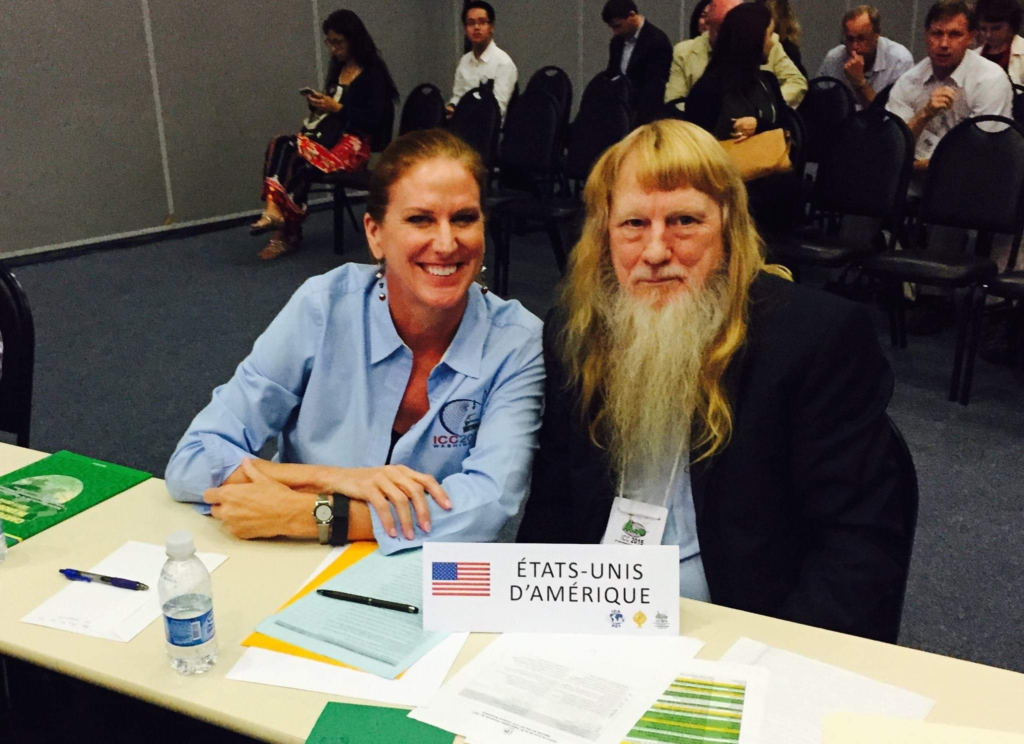On March 22, 2022, the world lost a GIS giant and cartography compadre when Dr. Lynn Usery passed from this earthly plane. Not even a week earlier, Lynn was busily planning workshops for AutoCarto 2022. He will be sorely missed by our community, not only for his many research contributions, leadership and vision, and tireless service, but also for his friendship and camaraderie.

Michael Tischler of the U.S. Geological Survey (USGS) wrote, “On paper, we knew him as the Director of the Center of Excellence for Geographic Information Science [CEGIS]. But he was far more than that title would lead one to believe. Lynn leaves a remarkable legacy given his extraordinary scientific accomplishments, presence as a leader in the geographic science community, and impact on individual geographic scientists inside USGS and around the world.”
It’s a challenge to specify the impact that Lynn has had on the field of GIScience because of the breadth and depth of his involvement and contributions. He was centrally involved in many areas of the discipline, including cartography, GIS, remote sensing, and spatial analysis. His eclectic research interests included digital cartography, map projections, scale and resolution, image classification, temporal GIS, geospatial semantics and ontology, and high-performance computing for geospatial data. It would be difficult to name a subject in our field about which Lynn could not speak knowledgably and insightfully.
Lynn was unique in that his impact came through his careers in both government and academia. Lynn started working for the USGS in 1977. He was a cartographer and geographer for the USGS from 1978 to 1988 focusing on developing automated cartographic production systems. In 1988, he took on a geography faculty position at the University of Wisconsin (UW) – Madison. In January of 1994, he moved to Georgia to serve on the geography faculty at the University of Georgia (UGA). In May of 1999, Lynn took on a Research Geographer position with the USGS in addition to his academic job at UGA. In 2005, he returned to USGS and ultimately conceived and became Director of CEGIS. In this role, he directed the science program and the visions and plans for topographic mapping research. While at USGS, Lynn also taught remote sensing at the Missouri University of Science and Technology.
In all his positions, Lynn was a ground breaker. In his early days at USGS, he began the development of digital mapping systems for the automated production of printed topographic maps. At UW, he helped found a GIS program. At UGA, he helped establish certificate programs in GIScience at both the undergraduate and graduate levels. When he returned to USGS, he started a cartography research program that led to CEGIS. For CaGIS, he chaired AutoCarto 2005 to close an eight-year gap and resurrect the symposium series. He also spearheaded the effort to bring the International Cartographic Conference back to the United States for only the second time, the first being in 1978.
Lynn was involved in nearly every major activity of CaGIS. He was president of the society from 2002 to 2004. He was editor of the Cartography and Geographic Information Science journal from 2003 to 2006. He was the conference organizer for AutoCarto 2005, 2006, and 2010. He was chair of the U.S. National Committee for the ICA from 2008 to 2012. He was presented with the CaGIS Distinguished Career Award in 2012. He was designated an ACSM Fellow in 2006, a year after CaGIS became independent. In fact, the only CaGIS activity that Lynn cannot be recognized for is a winning entry in the Map Design Competition, which he never entered.
That Lynn was so involved in and rightfully earned recognition from the society for his dedication and many contributions is admirable. That he did the same with many other societies (ASPRS, UCGIS, ICA), at the same time, makes Lynn exceptional and unparalleled. There is truly no match for him in this regard, and really not even anyone in the running.
On a personal note, Lynn was born in December 1951. He had two children, a son Kelynn, born 1986, and a daughter, Lacy, born 1988. Lynn received his BS in geography from the University of Alabama and MA and Ph.D. degrees in geography from UGA. He died Tuesday, March 22, 2022, after a brief illness.
On an even more personal note, I first met Lynn when, as a lowly master’s student, I invited him to give a presentation at Indiana University using funding from the American Association of Geographers Visiting Geographical Scientist program. To me, Lynn was already a GIS giant. I placed him on a proverbial pedestal, but he wouldn’t stay put. He treated me as an equal, though I didn’t feel that was deserved. And throughout the remainder of our association, he continued to do the same. He also did that with everyone else I saw him interact with. He was truly a giant, but he interacted with people on the same level, not by bringing himself down to their level, but by elevating them to his. He will truly be missed.
Aileen Buckley
